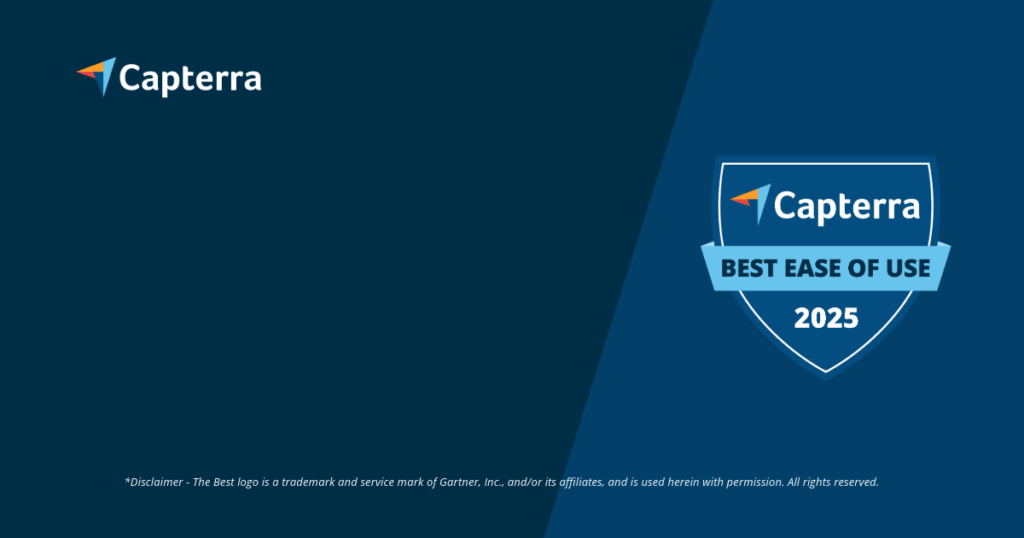Digital power for the construction site: Why construction data management software is becoming indispensable
The construction industry, our industry, is undergoing a massive upheaval – digitalization is turning things upside down here. And at the center, like a kind of superhero of this transformation, stands the construction data management software. But what exactly is behind it and why can modern construction projects no longer do without it? This is what we want to take a closer look at in this article from Valoon GmbH, where we deal with these challenges and opportunities every day. So if you’re considering how to better manage your construction project data, you’re in the right place. The right software can completely change your way of working and help you bring projects to successful completion. Let’s discover together how to find the solution that truly fits you and how to implement it successfully.
- Digital transformation: The construction industry is experiencing a fundamental change due to digitalization.
- Core technology: Construction data management software is crucial for managing modern construction projects.
- Valoon’s focus: At Valoon GmbH, we address the challenges and opportunities associated with it.
- Article goal: This article provides a comprehensive insight and a decision-making aid for the right software solution.
What is construction data management software, actually?
Think of construction data management software as specialized programs designed to really collect, store, manage, and of course evaluate all the data and information, which occurs during a construction project – and that’s certainly a lot – digitally. This includes planning documents and BIM models, conversation protocols and daily construction reports, right through to photographic documentation and defect logs. The goal? Simply put: a central, always up-to-date, and accessible data repository for everyone involved in the project. A good document management software for construction is often already the heart of comprehensive construction data software. And what we find particularly clever at Valoon: the ability to transform unstructured data, such as that received through messaging services, into useful project data. Modern systems like our solution can do that quite well.
Why is construction data management so crucial in the construction industry?
Construction projects are often real heavyweights: super complex, countless participants, and then the pressure of tight schedules and budgets. Anyone still relying on paperwork can quickly lose track, leading to misunderstandings and everything becomes terribly inefficient. This is exactly where construction data management software comes into play and tackles these problems at the root. It ensures transparency, makes everything traceable, and greatly enhances collaboration. When data is captured digitally and stored centrally, fewer mistakes occur, decisions are based on solid information, and one can be sure that quality standards and legal requirements are met. With a cloud-based construction documentation , you also have access to important information from anywhere at any time – a blessing, especially for teams who are often out and about. The optimized flow of information between the construction site and office is one of the main advantages that directly translates into time and cost savings.
What we want to offer you with this article: An all-around view and a decision-making aid
This article aims to give you a truly deep insight into the world of construction data management software. We will look at the most important features, highlight technical aspects, and discuss how to best implement such software. Additionally, we will scrutinize the competition and show you what to pay attention to when looking for a suitable solution. Our goal is to provide you with a solid basis for your decision so that you can find the software that is optimal for your company and that you can then successfully use. And of course, we also want to show you how our Valoon GmbH software can help you master your specific challenges in construction data management – especially by making the data collection super easy and seamlessly integrating messaging services. A well-thought-out digital construction file software is an important building block for success, that we are sure of.Austria’s software market in focus: The top providers of construction data in review
Let’s take a look at the Austrian market for construction data management software. It’s quite colorful and offers a variety of solutions tailored to different needs. When examining the leading providers and their specializations, choosing the right one for your specific requirements in construction data software often becomes easier. The decision for the right system is indeed a key point when it comes to successfully digitizing construction projects and can make a huge difference in efficiency. It is also super important not just to look at the features but also at how user-friendly the software is and how well it can be integrated into existing systems.
PlanRadar: Your strengths lie in construction documentation and real-time communication
PlanRadar has made a name for itself in construction documentation and defect management. The software impresses with comprehensive features for digital construction documentation, real-time communication, and a solid reporting system. A significant advantage of PlanRadar is how flexibly you can adapt forms, dashboards, and reports to your specific workflows. This way, companies can digitally depict their specific processes and significantly speed up report creation. The platform also supports mobile data collection on the construction site, making the direct capture of information on-site super easy and thus ensuring more accurate and up-to-date construction data.
Dalux: A strong focus on Building Information Modeling (BIM)
Dalux has a clear focus: the integration of Building Information Modeling (BIM). This specialization enables optimized project management directly on the construction site, linking BIM models with current project data. The direct connection to BIM models demonstrates how essential BIM has become in modern construction practice and brings advantages in visualization, coordination, and quality assurance. For companies that are already using BIM intensively or plan to do so, Dalux represents a truly interesting option in the field of construction data management software. Being able to access complex 3D models from mobile devices is certainly an important point for practical use on the construction site.
Capmo, Fieldwire, 123erfasst: Other important players in the market
In addition to PlanRadar and Dalux, there are of course other important providers of construction data management software in the Austrian market. Capmo, Fieldwire, and 123erfasst each have their own approaches and focus areas. For example, Capmo aims to impress with simple and intuitive handling, while Fieldwire excels in plan management and task coordination. In contrast, 123erfasst focuses strongly on mobile time tracking and construction documentation. Each of these solutions has its specific advantages and is suitable for different company sizes and project types. Thus, it is essential to examine the respective features closely and match them with your own requirements for such software. The automated construction documentation is a trend that many of these providers have on their radar.
A look at the core functions: Task management, daily logs, defect management
When selecting construction data management software, there are certain core functions that must be in place. These typically include:
- Task management: The creation, assignment, and tracking of tasks.
- Daily log: The digital capture of all important events and progress on the construction site.
- Defect management: The systematic capture, documentation, and of course the rectification of construction defects.
- Digital reporting: The creation of daily reports, photographic documentation, and measurements.
- Document management: The central storage and management of all project documents.
Which of these functions are most important depends entirely on the specific needs of the respective project. A good construction documentation app is often the key to acceptance within the team.
Mobile accessibility: iOS and Android apps in focus
The availability of good and functional mobile apps for iOS and Android is a crucial criterion for construction data management software. Since a large part of data collection and communication happens directly on the construction site, the mobile applications must be intuitive to use and powerful . All leading providers offer mobile apps that allow real-time data capture, taking photos, and accessing current plans and tasks. The fact that the apps also function offline is another important point, making it possible to work even where internet connectivity isn’t stable. The seamless synchronization of the mobile data collected with the central platform is then the icing on the cake for efficient construction data management.More than just software: The must-have features for your construction data management
For a construction data management software software to really stand out, it must come with a whole range of features to meet the complex requirements of modern construction projects. From simple project management to sophisticated analytical tools – the range of functions is key for efficiency and success. It’s about creating a central platform that supports all essential processes and optimizes the flow of information. At Valoon GmbH, we place special emphasis on this: Our software is designed not just to offer many features but primarily to be easy and intuitive to use. Because only then will it be embraced by all users.
- Digital project spaces: Enable a central storage and management of all project information and documents.
- Team collaboration: Support contact management and seamless integration of subcontractors and external partners.
- Flexible reporting: Offer customizable templates for construction logs such as daily reports that can be filled out directly on the construction site.
- Task overview: Provide clear dashboards and checklists to keep track of project status and upcoming tasks.
Project administration and the digital project space
The foundation of any construction data management software is solid project administration. This includes setting up a dedicated digital project space for each construction project. Here, all crucial information, documents, and communication histories are centrally stored and managed. It is crucial to manage user roles and permissions effectively. This ensures that everyone only sees and can edit what is relevant to them. A clearly structured project space also makes it easier to navigate and quickly find information – especially in large and complex projects, this is a real blessing. The digital construction file software is a central part of this.
Contact management and teamwork with subcontractors – stronger together
Nothing works in construction without effective teamwork. Good construction data management software supports collaboration by offering features for contact management and the integration of subcontractors and external partners. This can happen, for example, through guest access or special interfaces that enable controlled data exchange. Being able to assign tasks directly, track progress, and store communication logs in compliance with GDPR in the project space reduces misunderstandings and improves coordination. Our solution at Valoon GmbH can also integrate messaging services. This simplifies communication with external partners while documenting it at the same time – pretty handy, we think.
Customizable construction logs and reports (like daily reports) – tailored and fast
Creating construction logs and reports takes time, but it is a super important part of construction documentation. Modern construction data management software has customizable templates and digital forms ready to be filled out directly on the construction site. This applies, for example, to daily reports, acceptance protocols, or photographic documentation. If these reports can then also be automatically generated and emailed, it saves valuable time and ensures that all participants are always up to date. The flexibility to create your own templates or adapt existing ones is an important criterion for how well the software is received and how efficient it is. A good construction documentation app is a great help in this regard.
Checklists and task overviews (dashboards) – keep everything in view
To clearly monitor project status and upcoming tasks, checklists and dashboards are simply indispensable. Good software of this kind provides clear dashboards, displaying all essential metrics and task progress in real time. With individually customizable checklists, recurring processes can be standardized, and quality assurance can be improved. And if you can create tasks directly from checklists and assign responsibilities, it optimizes workflows and ensures that nothing falls through the cracks. This is a core aspect for effective construction management software..
Defect management: Capture, assign, monitor – no chance for errors.
An efficient defect management system is invaluable for avoiding costs and delays in the construction process. Construction data management software helps by enabling the digital capture of defects directly on-site – including photographic documentation, precise location on plans, and detailed descriptions. Recorded defects can then be assigned to responsible parties and their rectification can be systematically monitored. Automatic notifications and deadline management ensure that no defects slip through. The seamless documentation of the entire defect process is also super important when it comes to warranty claims.
Document management: Central storage for plans, protocols, photos – order is essential.
Centralized and structured storage of all project-relevant documents is one of the main tasks of any construction data management software. This includes construction plans, contracts, protocols, reports, and photos. Good software document management software for construction offers features like versioning, a strong search function, and a clear folder structure. Being able to access the most current document versions from anywhere – whether in the office or on-site – is crucial for smooth collaboration and prevents errors due to outdated information. The goal here is to create a complete digital construction file. zu schaffen.Technology that impresses: Cloud, mobile, security – what your construction software must be capable of
The technology behind a construction data management software is crucial for how powerful, flexible, and secure it ultimately is. Modern solutions fully rely on cloud technologies, mobile apps, and open interfaces to keep pace with the demands of today’s construction projects. So when choosing software, you should carefully consider these points. At Valoon GmbH, for example, we rely on a modern cloud architecture and intuitive mobile applications. This way, we can offer you a future-proof and user-friendly solution for your construction data management that you can depend on.
Cloud-based accessibility: Flexible in the office and on the construction site
The beauty of cloud-based construction data management software is that all project data is stored centrally and accessible from anywhere . Whether in the office, directly on the construction site, or in a home office – as long as there is an internet connection, all project participants can access the latest information anytime. This immensely promotes collaboration and speeds up decision-making processes. Moreover, with cloud solutions, time-consuming installations and the maintenance of one’s IT infrastructure are often no longer necessary. With a cloud-based construction documentation , data is synchronized in real-time, ensuring that everyone is always on the same page. And another plus point: Cloud solutions are scalable. This means that storage space and user licenses can be flexibly adjusted to current needs.
Mobile apps: Capture and communicate data directly on-site
Mobile apps for smartphones and tablets are simply indispensable in modern construction data management solutions. They enable direct data capture on-site , from photos and notes to filling out digital forms and checklists. The mobile data collection construction reduces the effort for transcribing handwritten notes and minimizes transmission errors. Features like the integration of the mobile camera, GPS tracking, and the ability to make markings directly in plans significantly enhance efficiency. An intuitive operation of the construction documentation app is of course essential to ensure that field employees are happy to use it.
Offline mode: Keep working even when the internet is down
Construction sites are not always places with stable internet connections. Therefore, a reliable offline mode is very important for the mobile apps of construction data management software. This allows users to capture data, view documents, and edit tasks even without an active internet connection. Once the connection is restored, the locally stored data is automatically synchronized with the central cloud platform. This enables uninterrupted work and prevents data loss. How robust the offline mode is and how well the synchronization works are important quality features of a good software solution for construction data.
Interfaces and interoperability: How the software fits into the existing system (API, BIM)
No software is an island. Therefore, powerful interfaces (APIs) and the ability to collaborate with other systems (interoperability) are super important for construction data management software to seamlessly integrate into a company’s existing IT landscape. This includes connections to ERP systems (check here: ERP software construction industry), accounting software, or specific BIM applications. Open standards and support for common data formats (like IFC for BIM or BCF for defect management) facilitate data exchange and prevent silo solutions. The possibility for BIM integration is becoming an increasingly important criterion for forward-thinking construction companies when selecting their construction data software.
Data security and privacy: GDPR compliance and where the servers are located
When it comes to sensitive project data, data security and privacy play a major role. Professional construction data management software must meet the highest security standards and ensure compliance with the General Data Protection Regulation (GDPR). This includes aspects like encrypted data transmission and storage, regular backups, a well-thought-out rights management system, and transparent information about the location of the servers. Ideally, the servers are located in the EU or a country with a comparable level of data protection. Choosing a provider that takes these issues seriously is essential for building trust and legal security.Ready for the future: How to successfully implement construction data management software
Implementing new construction data management software is far more than just a technical update – it’s a real change that affects the entire company. For it to be successful, careful planning and execution are crucial. It’s not just about selecting the right software but also about getting the employees on board and optimally adjusting processes. At Valoon GmbH, we stand by our clients on this journey and help them leverage the full potential of our simple and efficient solutions. Because transitioning to a paperless construction site software requires a clear strategy, as we know from experience.
First analyze: What features do you really need?
Before deciding on construction data management software, it’s super important to take a close look at your specific project requirements. Not every function that software offers is truly relevant or necessary for your company. Clarify which processes you want to digitize, what problems you want to solve, and what goals you want to achieve with the software implementation. It’s best to create a requirements catalog and prioritize the functions by importance. Also, consider future developments and whether the solution can grow with your company. A detailed needs analysis helps you find software that truly fits your needs and avoids costly misinvestments.
Technology and organization: Is the IT infrastructure compatible, what about data protection?
In addition to the functions, the technical and organizational conditions must also be right. Check if your current IT infrastructure is suitable for the new software solution or if adjustments are needed. Clarify matters related to data protection and security, especially regarding GDPR compliance and the location of the servers. Organizationally, it is important to establish clear responsibilities for the implementation and support of the software. How well the software integrates into existing workflows and whether employees are ready to accept new digital tools are also crucial success factors for any such software.
Test, test, test: Gather feedback from users
Most providers of construction data management software offer free trial periods or demos. Be sure to take advantage of this opportunity to extensively test the software in practice . Also, involve the people who will later work with it, especially the colleagues from the construction site. Their feedback is invaluable for assessing how user-friendly and practical the software really is. Pay attention to how intuitive the operation is, how well the mobile apps perform, and whether the software effectively supports your key processes. A practical test with real project data often yields much more insight than any polished presentation and is an important step in selecting the right software for construction data.. Beziehen Sie dabei auch die Leute mit ein, die später damit arbeiten sollen, vor allem die Kolleginnen und Kollegen von der Baustelle. Deren Feedback ist Gold wert, um zu beurteilen, wie benutzerfreundlich und praxistauglich die Software wirklich ist. Achten Sie darauf, wie intuitiv die Bedienung ist, wie gut die mobilen Apps funktionieren und ob die Software Ihre wichtigsten Prozesse effektiv unterstützt. Ein Praxistest mit echten Projektdaten bringt oft viel mehr Erkenntnisse als jede Hochglanzpräsentation und ist ein wichtiger Schritt bei der Auswahl der passenden Software für Baudaten.
Training and support: To ensure a smooth start
Even the best construction data management software can only realize its full potential if employees can use it correctly and efficiently. A comprehensive training offer and good support from the provider are therefore indispensable. Look for understandable training materials, webinars, or in-person training sessions. A fast and competent support team can address questions or problems quickly, facilitating a smooth start and ensuring that the software is well received. At Valoon GmbH, we place great value on an easy start and offer our clients extensive support. This ensures that they can optimally utilize our software solution from the very beginning. This is an important aspect for effective construction management software., we believe.Construction data meets geodata: With GIS integration to better decisions
When we integrate Geographic Information Systems (GIS) into our construction data management software new possibilities unfold for planning, executing, and managing construction projects. Imagine: project data is linked with spatial information! This allows us to visualize complex relationships much better, deepen analyses, and make even more precise decisions. It’s far more than just pure documentation – it enables truly proactive, data-driven management. The combination of construction data and geodata brings enormous added value, especially for infrastructure projects and facility management. This is really the next level!
Real-Time Location Intelligence: Smarter decisions directly on the construction site
By integrating real-time data feeds into maps, dashboards, and web applications, GIS enables proactive, data-driven decision-making – right on the construction site. For example, you can dynamically display where machines and materials are currently located, how far along the work is, or where safety-related areas are. This ‘Real-Time Location Intelligence’ helps us identify bottlenecks early, optimally allocate resources, and enhance safety on-site. The ability to integrate current geodata into construction data management software is an important step towards a smarter construction site, in our opinion.
Digital Twin: A digital twin for smart asset management
An especially exciting field is the creation of a digital twin during the construction phase that is fed with real-time data. This digitale Zwilling des Bauwerks is handed over to the client after project completion and enables super-efficient asset management throughout the entire lifecycle of the building. Maintenance measures can be planned more precisely, operating costs optimized, and renovations conducted more efficiently. The construction data management software plays a key role here as it captures and structures the data needed for this digital twin. And the connection with GIS data adds a spatial component to it – simply brilliant!
GIS-supported project delivery: How we optimize construction processes
The use of GIS can significantly optimize construction processes and strengthen the relationship between us as a construction company and our clients. By integrating location information into planning and scheduling processes, we can, for example, optimize logistics chains and make construction schedules more realistic. The Visualization of construction progress on a map makes communication with the client much easier and creates transparency. ArcGIS solutions, as mentioned in the La Cima case study, already show how practical this can be for managing construction projects and optimizing workflows when combining reality capture and problem identification.
Integrating drone images and survey data – even more efficiency
By combining GIS with data from other sources, such as drone flights or surveys, even more opportunities for efficiency arise. We can use drone images to create current terrain models, document construction progress, or inspect hard-to-reach areas. The integration of this visual and spatial data in the construction data software enables a much more comprehensive analysis and documentation of the construction process. And when survey data and field service data are integrated in real-time, inefficient offline workflows are eliminated, and we can ensure that all project participants are always working with the most up-to-date information.
The key benefits of GIS integration into construction data management software at a glance
Integrating GIS into your construction data management software brings a whole range of benefits:
- Better visualization: Complex project data is spatially represented. This makes it easier to understand and communicate about it.
- Optimized planning: Location-based analyses enable more accurate planning of resources, logistics, and schedules.
- More efficient monitoring: Construction progress and potential issues can be tracked on maps in real-time and addressed more quickly.
- Better-informed decisions: By combining various data sources, decisions can be made on a more solid basis.
- Sustainable asset management: Creating digital twins with geodata helps maintain the value of buildings in the long term.
Does it pay off? The ROI of construction data management software under the microscope
Investing in a construction data management software is not just a question of modern technology, but above all, a tough economic decision. The return on investment (ROI) – meaning the outcome at the end – can be seen in many ways: from direct cost savings to long-term strategic advantages. By looking closely at the potential benefits, one can better assess what such software truly brings to one’s company. We at Valoon GmbH firmly believe that our solution, which is designed for simplicity and efficiency, delivers a quick and sustainable ROI. Especially since it reduces friction losses in communication and data collection – and you can feel that immediately.
- Direct cost reduction: Significant savings due to fewer mistakes and avoidance of duplicate work.
- Efficiency increase: Faster project processes and improved communication between office and construction site.
- Improved compliance: Seamless, traceable documentation for legal certainty and quality assurance.
- Long-term benefits: Better-informed decisions through data analysis and optimized asset management for future projects.
Direct cost savings: Fewer mistakes, less duplicate work – more money in your pocket.
One of the clearest advantages of construction data management software is direct cost savings, as simply fewer mistakes occur and duplicate work is avoided.Centralizing data storage and accessing always up-to-date information results in fewer misunderstandings that could otherwise lead to expensive rework. When data is captured digitally, it minimizes transmission errors, which unfortunately often occur in manual processes. Automated processes, such as in reporting or defect management, reduce administrative effort and create space for tasks that truly add value. The use of a automated construction documentation plays a crucial role in reducing errors here.
Efficiency increase: Faster processes, better communication – everything runs smoother.
Construction data management software provides a significant boost in efficiency in almost all phases of a project.Communication between office and construction site becomes faster and more transparent. Decisions can be made more quickly because all important information is immediately at hand. Processes such as plan distribution, task management, or document approval are digitized and thus expedited. With the mobile data collection construction information can be captured directly where it occurs – optimizing the entire flow of information. This time savings is directly reflected in shorter project durations and lower costs.
Better compliance and seamless documentation – being on the safe side.
Compliance with legal requirements and contractual agreements is extremely important in construction. Construction data management software helps companies ensure a seamless and traceable documentation of all project activities. This is not only important for internal quality assurance but also when disputes or warranty claims arise. Digital construction journals, defect reports, and acceptance certificates, securely stored in the software, provide reliable evidence. The structured storage in a digital construction file software greatly facilitates audits and compliance with regulatory requirements.
Long-term advantages: Smarter decisions thanks to data and better asset management.
In addition to direct savings and efficiency gains, such software also offers long-term strategic benefits.The collected project data is a valuable treasure of knowledge that can be utilized for future projects. By analyzing completed projects, processes can be continuously improved, and risks minimized. Moreover, comprehensive construction documentation is the foundation for efficient asset management after project completion. The data captured during the construction process can be reused for maintenance, service, and operation of the building – securing the value of the property in the long term.
Pricing models: From free to subscription – what suits you?
The pricing models for construction data management software vary widely. Some providers offer free basic versions with limited functionality that may be suitable for small companies or individual projects. However, most professional solutions are based on subscription models (SaaS – Software as a Service).You then pay monthly or yearly fees per user or project. In these models, updates, maintenance, and support are usually included. When calculating total costs (Total Cost of Ownership), you should also consider expenses for training, implementation, and any necessary adaptations. It is definitely worth comparing the various pricing models carefully and choosing a solution that provides a good price-performance ratio for your specific needs.Overcoming hurdles, seizing opportunities: This is how it works with construction data management software.
Of course, implementing a construction data management software is a huge step forward for digitization in construction. But honestly, there are some challenges involved. However, if you know them and approach them proactively, the implementation goes much better and you can fully leverage the potentials. It’s not just about the technology; it’s also about the people and processes in the company. At Valoon GmbH, we help our clients overcome these hurdles. Our approach: a particularly user-friendly design and seamless integration into existing workflows – for example, by utilizing familiar messaging services for data collection.
- Promote acceptance: Enthuse employees for new technologies and involve them early.
- Master data migration: Strategically transfer existing data into the new system and utilize interfaces.
- Ensure data quality: Establish processes for accurate, consistent, and complete data.
- Accompany change: Comprehensive training and continuous change management as keys to success.
Acceptance in a traditionally minded industry.
The construction industry is often considered somewhat traditional and not as digitally-keen as other sectors. One of the biggest hurdles in implementing construction data management software is, therefore, to get the employees excited about it.Many are used to their established, often paper-based workflows and are initially skeptical of new technologies. To overcome this hurdle, it is crucial to clearly and understandably explain the benefits of the software, involve employees early in the selection and implementation process, and offer good training. An intuitive user interface and the option to use familiar tools like WhatsApp for the mobile data collection construction can work wonders and significantly increase acceptance.
Transfer data and integrate it into the existing system.
Many companies already have IT systems and large amounts of project data in various formats. Transferring this data into the new construction data software and linking it with other systems (such as ERP or accounting) can be quite tricky. Therefore, it is important to devise a clear strategy for data migration in advance and thoroughly check what the new software can do regarding interfaces. Providers who assist with data migration and system interface configuration are invaluable here. Careful planning minimizes the risk of data loss and ensures that the new software integrates smoothly with the existing IT landscape. The connection to an ERP software for the construction industry is often a crucial aspect.
Good data, good decisions: Ensuring quality and consistency.
The quality of the data managed in the construction data management software is absolutely crucial to its usefulness. Inaccurate, incomplete, or contradictory data can lead to incorrect decisions and inefficiency – and no one wants that. Therefore, it is important to establish processes and responsibilities to ensure the data quality and consistency.This includes clear guidelines for data entry, regular reviews, and possibly validation mechanisms in the software itself. Training employees on how to correctly use the software and raising their awareness about the importance of high-quality data is also essential. Good software of this kind should offer features that help maintain and improve data quality.
Train employees and accompany change (change management).
Implementing construction data management software is a genuine change management process. Employees must not only learn how the new software works but often also adjust their workflows. Comprehensive training and continuous support are therefore key to success. The training should be practical and tailored to different user groups. It is also important to foster a culture of learning and openness to new technologies. Appointing so-called key users who are available as contact persons for their colleagues and providing understandable instructions and support materials can ease the transition. Investing in training and change management definitely pays off – through higher user acceptance and faster realization of the benefits of the new software.
Typical challenges and how we at Valoon address them.
When implementing construction data management software, a few typical stumbling blocks may arise. Here are some of them and how we see solutions at Valoon GmbH:
- Resistance to change: Our solution? Early involvement of employees, clear communication of benefits, good training, and of course, choosing user-friendly software like Valoon GmbH’s, which focuses on simplicity.
- Complex data migration: Here, detailed planning, the use of migration tools, or assistance from the software provider can help, often along with a stepwise migration.
- Insufficient data quality: Clear entry guidelines, validation rules in the software, training for employees, and regular data audits are crucial here.
- Integration problems with existing software: Choosing software with robust APIs and standard interfaces, as well as closely collaborating with the IT department and software vendors, is essential.
- Insufficient training: Tailored training programs, continuous support, e-learning offerings, and appointing key users can alleviate this issue.
Building with foresight: Trends and our tips for your construction data management.
Digitalization in construction is unstoppable, and construction data management software plays an absolutely key role. Whoever can efficiently capture, manage, and utilize data simply has the lead in competition. But what does the future of construction data management look like, and what trends will really shake up our industry? At Valoon GmbH, we always keep a watchful eye on this to continuously improve our solutions and provide you with the most innovative tools. Because the right software is the key to successfully and efficiently overseeing construction projects in the future. So if you’re ready to take your company’s digitalization to the next level, we have the right tools and expertise for you.
The future of construction data management: What trends and innovations await us.
The future of construction data management will be shaped by some truly exciting trends and innovations. For example, there’s the increasing use of cloud platforms, which will ensure even better collaboration and super easy data access. The integration of Internet of Things (IoT) sensors will allow data to be captured automatically right from the construction site – pretty cool, right? Augmented Reality (AR) and Virtual Reality (VR) could be used for planning reviews and virtual site inspections. Another important trend is the growing significance of data analytics and business intelligence. This allows us to extract valuable insights from the collected construction data to optimize processes and make better decisions. The digital construction documentation will become ever smarter and more interconnected.
The role of AI and automation – the clever little helpers.
Artificial Intelligence (AI) and automation will revolutionize construction data management, we are sure of that. AI algorithms can, for example, be used to detect patterns in massive data sets, identify risks early, or optimize processes. Automation can take over tedious routine tasks, such as classifying documents or creating standard reports, relieving employees. Automatic translation of communication, as our Valoon software already offers, is a great example of how AI can facilitate collaboration in international teams. The ability of construction data management software to integrate AI-supported features will be an important distinguishing factor in the future.
Our recommendations for selecting the right software.
Choosing the right construction data management software is a genuinely strategic decision. Here are a few recommendations from us to help you:
- Clearly define what you need: What problems should the software solve? What features are essential for you?
- Pay attention to user-friendliness: An intuitive operation is crucial for acceptance within the team. Our Valoon software excels here with its simplicity.
- Check if it is suitable for mobile use: Good mobile apps with offline functionality are a must for work on construction sites.
- Consider integration possibilities: The software should seamlessly integrate into your existing IT landscape.
- Test thoroughly: Use free trial versions to put the software through its paces in real operation.
- Ensure scalability and future-proofing: The software should be able to grow with your company and not become outdated tomorrow.
- Compare pricing models and support services: Choose a provider that offers a fair price-performance ratio and good support.
If you choose carefully, you will surely find a software solution for construction data that optimally supports your processes.
Act now: Drive digitization in construction forward!
Digitization offers the construction industry huge opportunities to work more efficiently, transparently, and with higher quality. A modern construction data management software is the key to truly harnessing these potentials. It helps you break down information silos, improve collaboration, and make informed decisions based on current data. Valoon GmbH stands by you as a strong partner to optimize communication and project management in your company. Our software makes data capture and processing super easy and sustainably improves the flow of information between field service and office – especially through the clever integration of everyday messaging services like WhatsApp.
Now is the perfect time to set the course for a digital future. Contact us today for a personalized consultation! We are happy to show you how Valoon can help make your construction projects even more successful. Take the first step and request a free demo of our construction data management software. Visit our contact page – let’s tackle your digital transformation in construction together!
What exactly is construction data management software and why is it important for my construction company?
Construction data management software is a specialized digital tool that helps collect, manage, and evaluate all data of a construction project centrally – from plans to photos. It is crucial to increase efficiency, reduce errors and improve the collaboration between office and construction site, which is especially essential in complex projects.
My team uses WhatsApp extensively. Can this be connected to construction data management software?
Yes, modern construction data management software like that of Valoon GmbH allows for seamless integration of popular messaging services like WhatsApp.This way, your employees can use familiar tools for data collection, and the information will be automatically structured and stored in the project..
We are not a very tech-savvy company. Is this kind of software complicated to learn?
Many providers, including Valoon GmbH, place great importance on simplicity and user-friendliness. The goal is to keep the entry barriers low so that. Ziel ist es, die Einstiegshürden niedrig zu halten, sodass no lengthy training for field service staff is necessary, and the software is quickly accepted and used by everyone on the team.
How can construction data management software specifically help reduce costs and avoid errors?
Through the digital and centralized capture of data, transmission errors are minimized, and duplicate work is avoided. Automated reports and an optimized flow of information lead to time savings and fewer misunderstandings,which directly results in lower costs and higher project quality.
What core functions should a good construction data management software necessarily offer?
Important functions include project administration and a digital project space,task management, a digital construction log, defect management, document management, customizable reports, and mobile apps. The selection should be oriented to your specific project requirements. Is access to project data also possible from the construction site?
Ist der Zugriff auf Projektdaten auch von der Baustelle aus möglich?
Yes, a core feature of modern construction data management software is its mobile accessibility via apps for iOS and Android.This allows for data capture, communication, and access to current plans and tasks on-site,often even in offline mode.
How does the software support defect management on the construction site?
It enables the digital capture of defects directly on the construction site,including photos, plan localization, and descriptions. Defects can be assigned to responsible parties, and their remediation can be systematically tracked,which ensures quality and simplifies warranty processes.
How secure is my data with a cloud-based construction data management software?
Reputable providers rely on high security standards,including encrypted data transmission and storage, regular backups, and GDPR compliance. Pay attention to the server location (ideally EU) and the provider’s transparent data protection policies.








